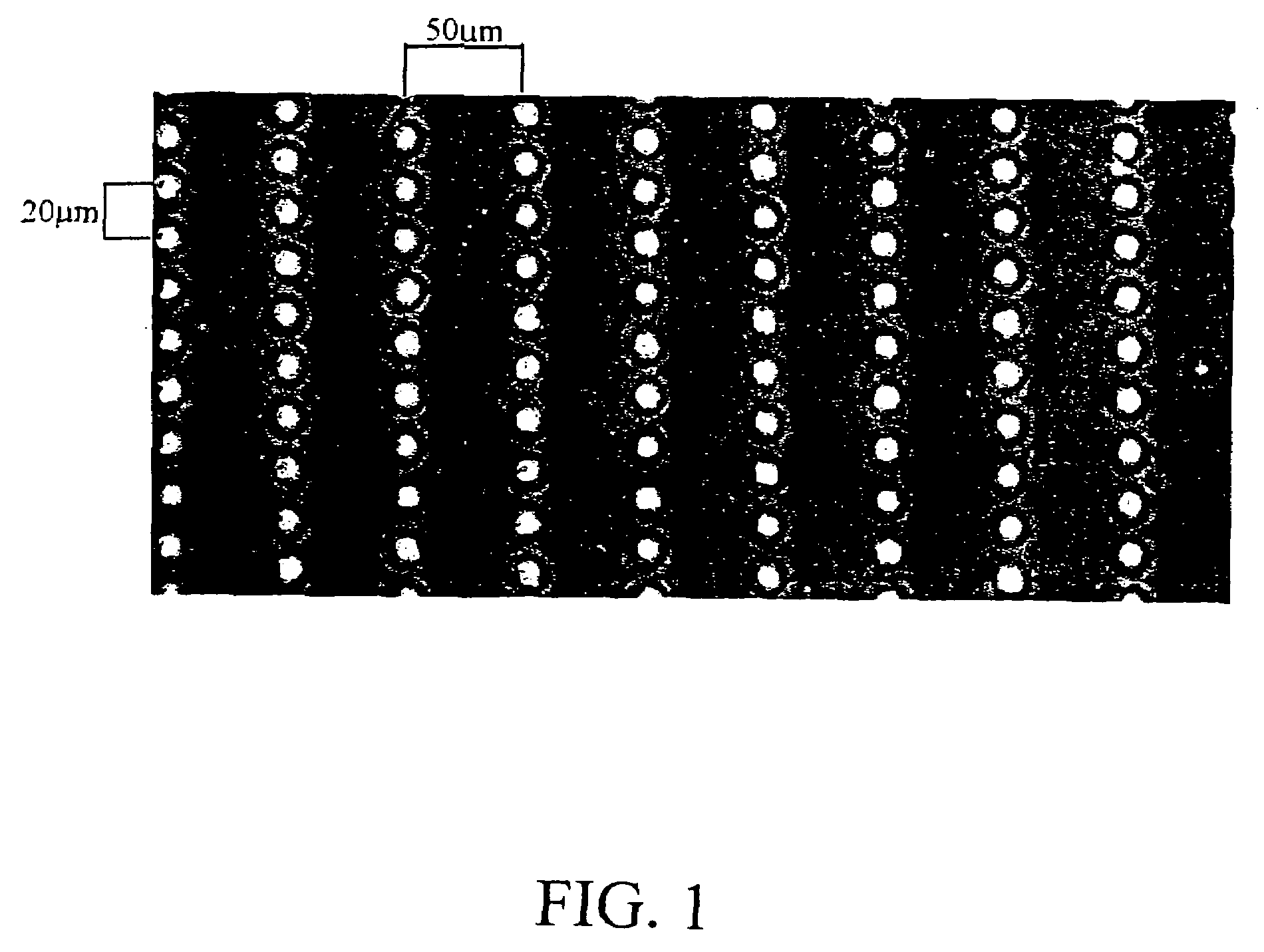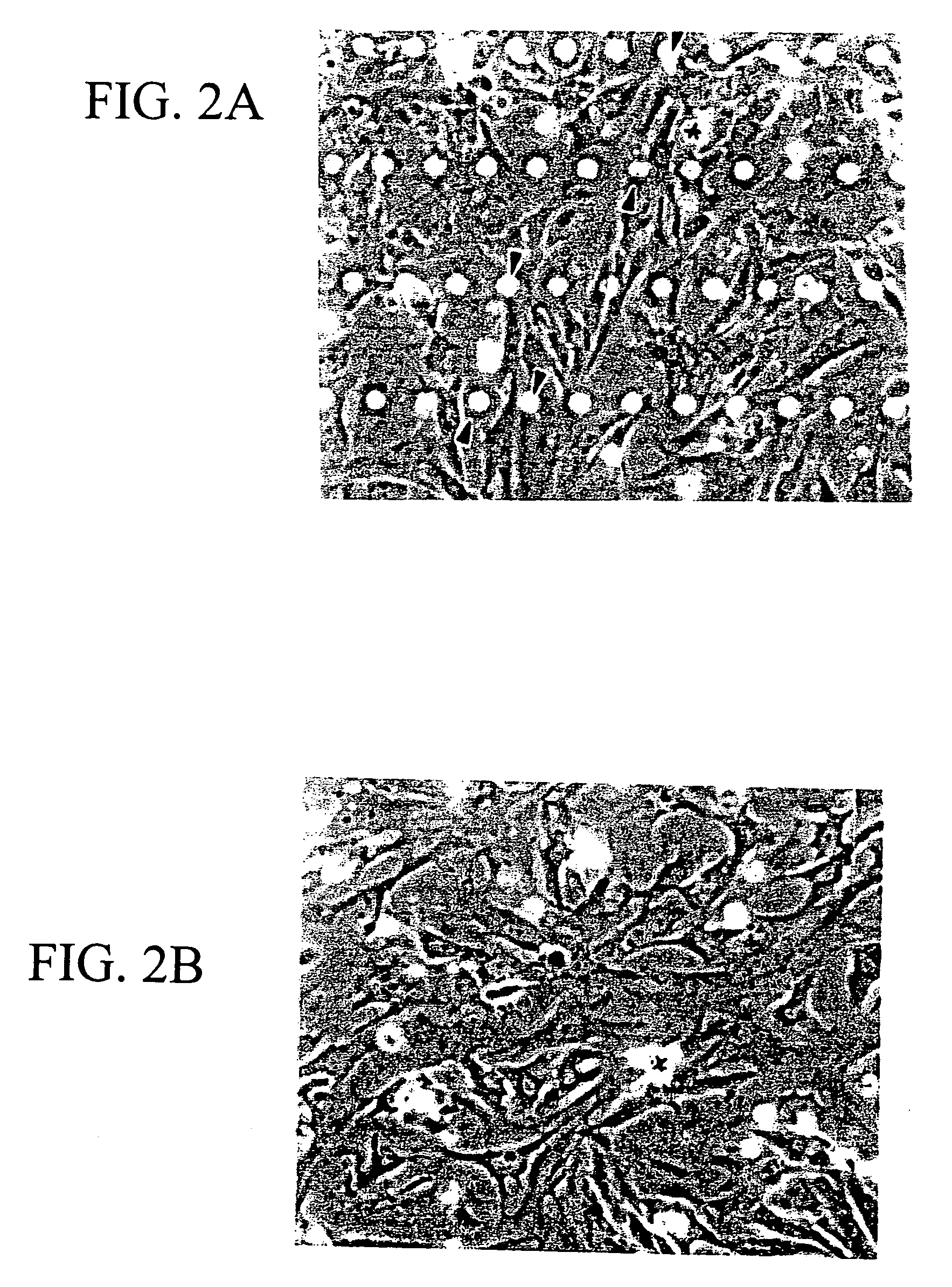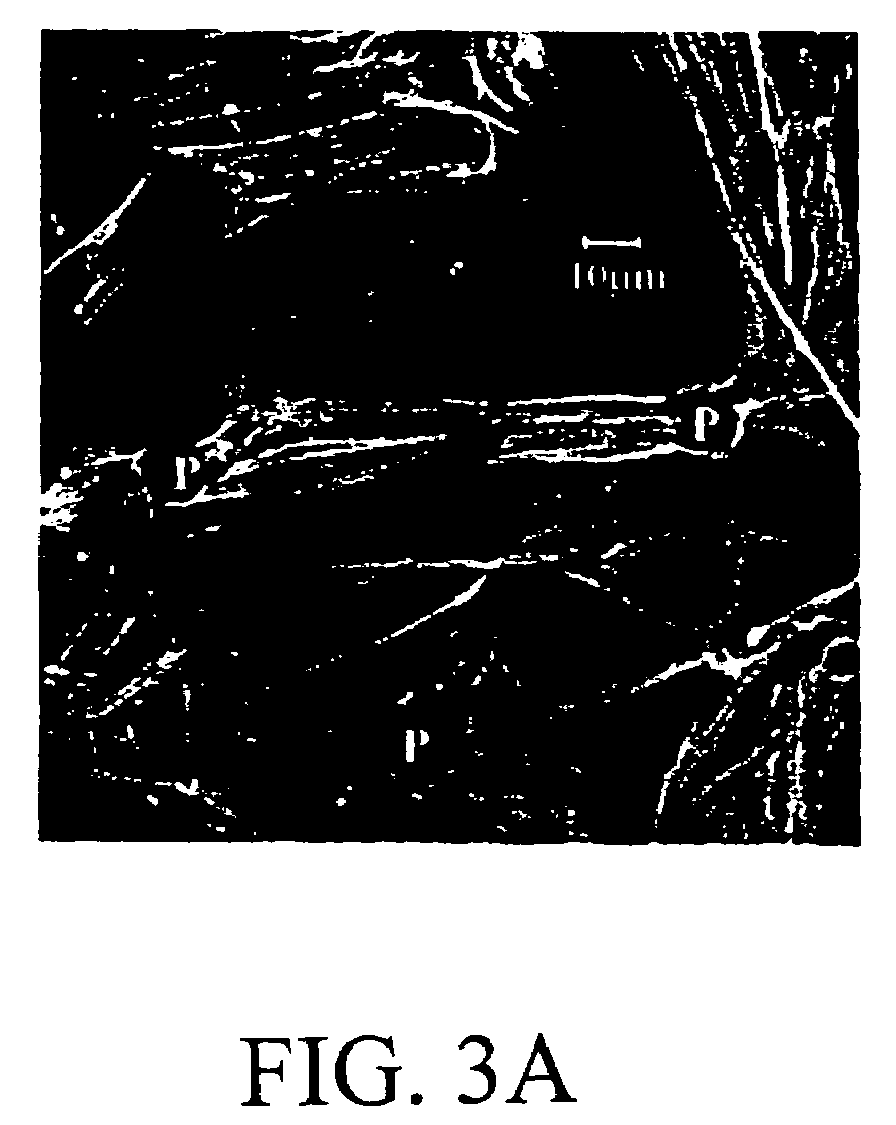Method of growing stem cells on a membrane containing projections and grooves
a technology of stem cells and membranes, applied in the field of cell growth and culture, can solve the problems of insufficiently addressed in vitro approaches, cell culture systems producing significant detachment between membranes, and ineffective in providing a good indication of cell function in vivo, etc., to facilitate cellular orientation, facilitate cell adhesion, and enhance cell differentiation
- Summary
- Abstract
- Description
- Claims
- Application Information
AI Technical Summary
Benefits of technology
Problems solved by technology
Method used
Image
Examples
example 1
Materials and Methods
[0116]The present example provides details of materials and methods employed throughout the application and in the Examples presented herein below.
Polymeric Microtextured Membrane Preparation.
[0117]Control silicone membranes are prepared using silicone membranes (Specialty Manufacture, MI) that are pre-treated with ION HCl for 2 hours before coating with laminin to allow the cells to adhere. The microtextured polymeric membranes will be fabricated by a technique where photolithographically defined silicon wafers are used as templates or molds for reproducing complimentary images on desired polymers. This enables the reproduction of precise surface architectures and geometries.
[0118]Silicone microtextured surfaces are produced using a method developed in the Desai laboratory as described herein throughout. Starting with a clean silicon wafer, approximately 1 ml of UV light sensitive negatice photoresist is spun on the wafer for 30 seconds at 1500 rpm. This result...
example 2
Use of Surface Microtopography to Determine Cell Attachment and Shape
[0130]Microtextured membranes are created using photolithography and microfabrication techniques described herein above. FIG. 1 shows micro-pegged silicone membrane of the present invention viewed with phase microscopy. This membrane has rows of micro-pegs, each 10 μm high spaced 30 μm center to center along the row with 100 μm between the rows (center to center).
[0131]Primary rat neonatal cardiac myocytes were plated on laminin coated flat silicone membranes or those with micro-pegs 10 μm high to allow for perpendicular attachment. The changes in morphology were assessed by comparing the frequency of peg attachment and cell height and this reveals excellent myocyte shape and peg adhesion. FIG. 2A shows cardiac myocyte cultures growing on a “pegged” silicone membrane coated with laminin. This membrane has rows of micro-pegs, each 10 μm high (seen as rows of bright circles) spaced 30 μm center to center along the ro...
example 3
Altering the Surface Chemistry of the Microtextured Membranes
[0134]This Example deals with chemical bonding protocols which alter the surface chemistry of microtextured silicone and other substrata to promote attachment, adhesion-dependent cell signaling and growth of cardiomyocytes in culture.
[0135]Covalent attachment of peptides to the silicone surfaces are used, as described above and depicted schematically in FIG. 7A. The GRGDSP (SEQ ID NO:1) peptide sequence is known to activate the integrin binding mechanism of various cell lines (Xiao et al., Langmuir 14: 5507-5516, 1998). The peptide functionalized silicone membranes were characterized by radiolabelling and x-ray photoelectron spectroscopy. 125I radiolabelling of the peptide was performed, then the peptide was bound to the silicone surface. FIG. 7B shows the I) C(1s) and II) N(1s) core level x-ray photoelectron spectra for the silicone surfaces at various stages of preparation (letters on spectra correspond to those in FIG. ...
PUM
| Property | Measurement | Unit |
|---|---|---|
| size | aaaaa | aaaaa |
| size | aaaaa | aaaaa |
| size | aaaaa | aaaaa |
Abstract
Description
Claims
Application Information
 Login to View More
Login to View More - R&D
- Intellectual Property
- Life Sciences
- Materials
- Tech Scout
- Unparalleled Data Quality
- Higher Quality Content
- 60% Fewer Hallucinations
Browse by: Latest US Patents, China's latest patents, Technical Efficacy Thesaurus, Application Domain, Technology Topic, Popular Technical Reports.
© 2025 PatSnap. All rights reserved.Legal|Privacy policy|Modern Slavery Act Transparency Statement|Sitemap|About US| Contact US: help@patsnap.com



